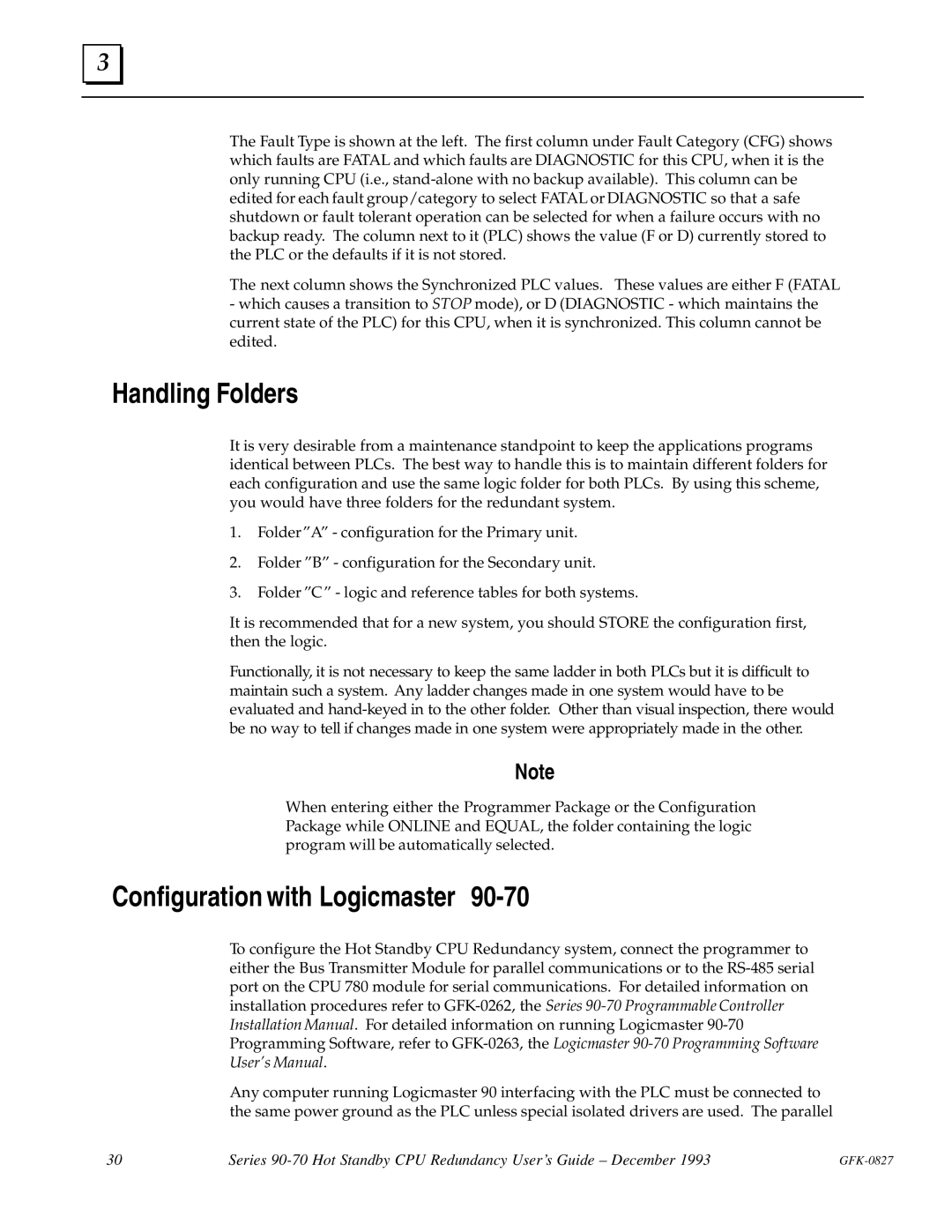3 |
The Fault Type is shown at the left. The first column under Fault Category (CFG) shows which faults are FATAL and which faults are DIAGNOSTIC for this CPU, when it is the only running CPU (i.e.,
The next column shows the Synchronized PLC values. These values are either F (FATAL
-which causes a transition to STOP mode), or D (DIAGNOSTIC - which maintains the current state of the PLC) for this CPU, when it is synchronized. This column cannot be edited.
Handling Folders
It is very desirable from a maintenance standpoint to keep the applications programs identical between PLCs. The best way to handle this is to maintain different folders for each configuration and use the same logic folder for both PLCs. By using this scheme, you would have three folders for the redundant system.
1.FolderºAº - configuration for the Primary unit.
2.Folder ºBº - configuration for the Secondary unit.
3.Folder ºCº - logic and reference tables for both systems.
It is recommended that for a new system, you should STORE the configuration first, then the logic.
Functionally, it is not necessary to keep the same ladder in both PLCs but it is difficult to maintain such a system. Any ladder changes made in one system would have to be evaluated and
Note
When entering either the Programmer Package or the Configuration Package while ONLINE and EQUAL, the folder containing the logic program will be automatically selected.
Configuration with Logicmaster 90-70
To configure the Hot Standby CPU Redundancy system, connect the programmer to either the Bus Transmitter Module for parallel communications or to the
Any computer running Logicmaster 90 interfacing with the PLC must be connected to the same power ground as the PLC unless special isolated drivers are used. The parallel
30 | Series |
|
